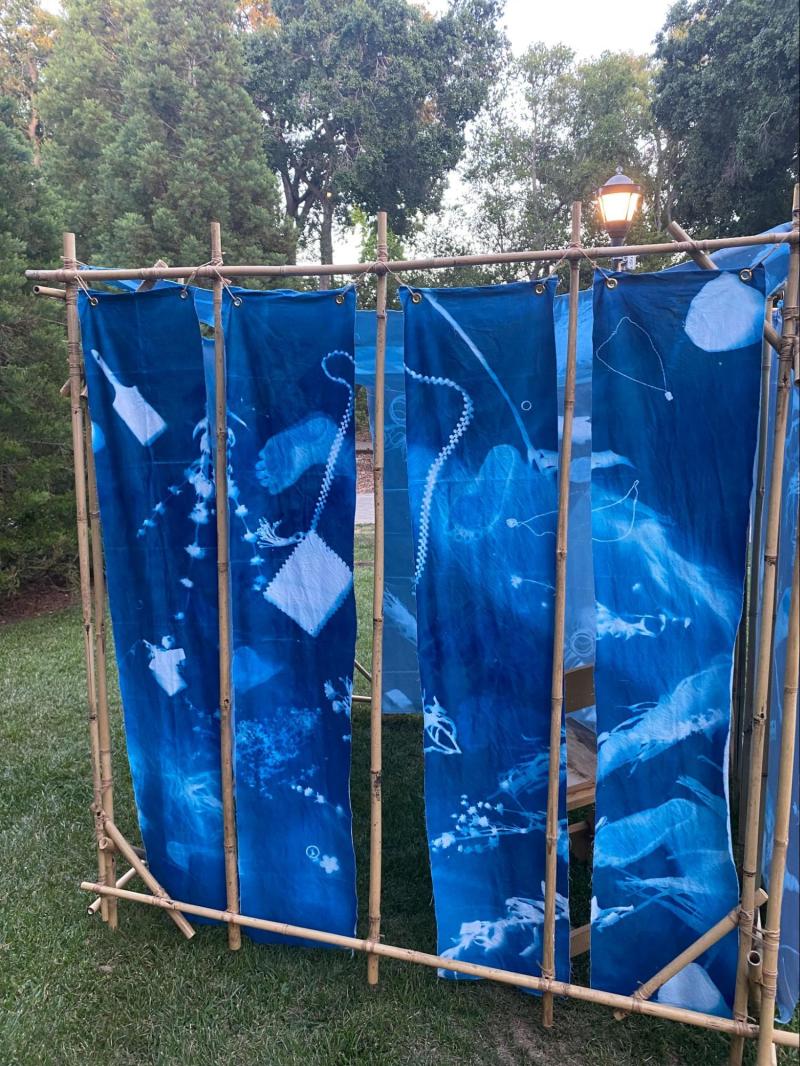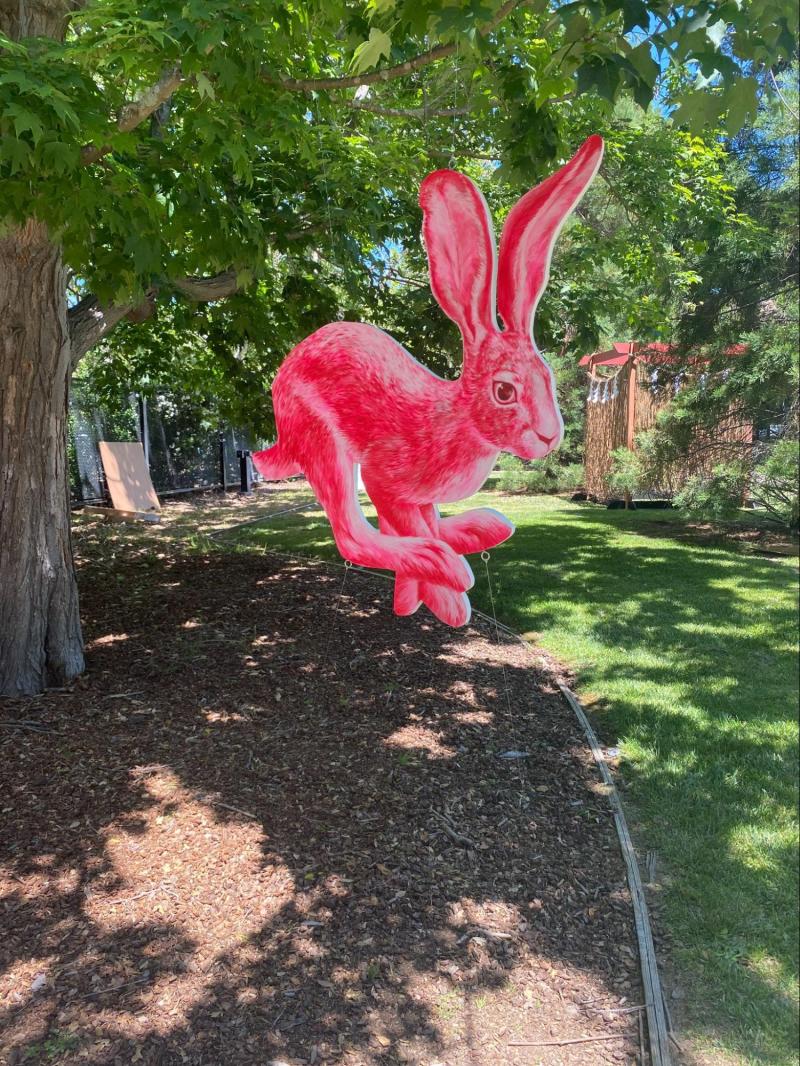Synonymous with spring quarter, Saturday marked the annual Frost Music & Arts Festival, colloquially known as Frost Fest. Although many guests come for the music, a growing component of the festival resides in the grove to the left of the amphitheater’s entrance: the Frost Art Exhibit.
Put on by Stanford Concert Network, Stanford Live and Goldenvoice, the event caters to Stanford students and the greater Palo Alto area alike. This year’s theme of “Sacred Spaces” attracted 12 artists working on nine projects who received funding after a rigorous selection process. In the Frost Arts team’s curatorial statement, they invited artists to “consider the sacred through its many potential resonances and definitions — it may be physical or abstract, religious or secular, personal or collective — as a force that both restores and transforms realities.”
Nestled in the trees, the installations were scattered on either side of a paved walkway, inviting viewers to explore the grove. I only wish that there could have been more signposting within the event so as many people knew about it as possible.
Camilla Napa’a ’25 said she went to see the exhibit because she has “seen [that] my peers are more STEM-smart, but I’m really interested in what they [have] to creatively show to the world.”
The pieces varied in medium, but the works were often large, three-dimensional and engaged in multiple mediums. Some of the works invited audience interaction; a telescope urged viewers to “LOOK!” into its viewing lens, showing a projected night sky (“Meet Me in the Stars” by Vincent Song ’24), and a three-dimensional platform depicting an Armenian rug had a sign in front with instructions to “Take Off Shoes & Step Inside” (“My Fabric of Time and Space” by Rima Makaryan ’24).
My favorite work was “Tinkling Pavilion” by Drew Vallero ’23. It was inspired by tinkling, a traditional Filipino dance where performers step in between clapping bamboo sticks. Vallero fixed bamboo sticks into a frame using traditional lashing methods and hung blue photo-sensitive cyanotype prints between the sticks, revealing ghostly footprints and other objects. The skillfully crafted prints were reminiscent of items floating in outer space or the deep sea. Additionally, there was a chair placed in the center of the cube, inviting viewers to consider what it would be like inside this ghostly blue space.

Miranda Li’s ’23 M.S. ’24 “Lepus Californicus” called on the viewer to consider humanity’s relationship with the jackrabbit and the land we share with it. Li strung a painting of a jackrabbit between tree branches; one side of the painting used realistic brown colors, while the reverse was a mirror image done in neon pink. The pink rabbit glowed and stood out, whereas the natural colors completely blended in with the environment. It was a reminder of how many animals we probably walk by on a daily basis and never notice.
Fourth-year PhD student Shintaro Fushida-Hardy focused instead on human contact with his “Shrine to Relationships.” Reminiscent of Japanese architecture and Shinto, an Indigenous religion of Japan, Fushida-Hardy’s exhibit invited viewers to step inside the small shrine with others to inspect and value their relationships with one another. In Shinto, ropes and paper streamers called shide both signify sacredness, so both of these were present within Fushida-Hardy’s work. He relied on friends to help him construct the shide, tying the project back to its intent of commemorating relationships.
Attendee Hailee Heinrich ’23 said, “It was just super cool to see what students are working on and creating and producing.”
Unfortunately, the exhibit lacked markers labeling each work, which would have been helpful in explaining each piece distinctly and immediately. In their place, however, an artfully designed companion zine showcased each artist’s progress photos, work descriptions and biography.
Lucy Nemerov ’24, one of the curators of the show, hopes viewers will step away with “a new conception of what makes a seemingly normal space; transcend the normal, what makes something sacred, and how you can consider that within your own life.”
The Frost Art Exhibit was certainly a sacred space in itself, and the community should look forward to the future of the program, as well as the future of all participating artists.
Editor’s Note: This article is a review and includes subjective thoughts, opinions and critiques.
